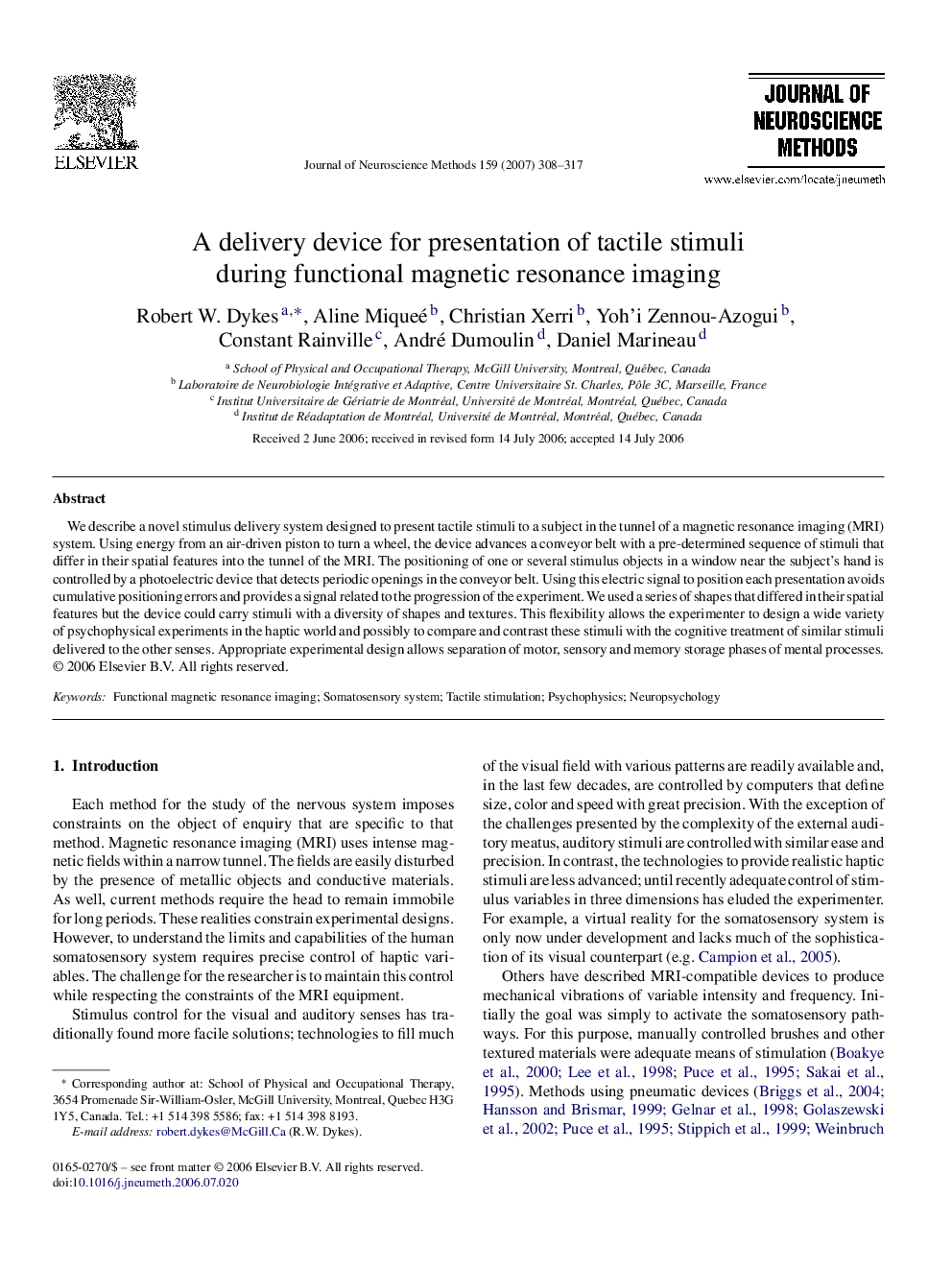| Article ID | Journal | Published Year | Pages | File Type |
|---|---|---|---|---|
| 4336897 | Journal of Neuroscience Methods | 2007 | 10 Pages |
We describe a novel stimulus delivery system designed to present tactile stimuli to a subject in the tunnel of a magnetic resonance imaging (MRI) system. Using energy from an air-driven piston to turn a wheel, the device advances a conveyor belt with a pre-determined sequence of stimuli that differ in their spatial features into the tunnel of the MRI. The positioning of one or several stimulus objects in a window near the subject's hand is controlled by a photoelectric device that detects periodic openings in the conveyor belt. Using this electric signal to position each presentation avoids cumulative positioning errors and provides a signal related to the progression of the experiment. We used a series of shapes that differed in their spatial features but the device could carry stimuli with a diversity of shapes and textures. This flexibility allows the experimenter to design a wide variety of psychophysical experiments in the haptic world and possibly to compare and contrast these stimuli with the cognitive treatment of similar stimuli delivered to the other senses. Appropriate experimental design allows separation of motor, sensory and memory storage phases of mental processes.
